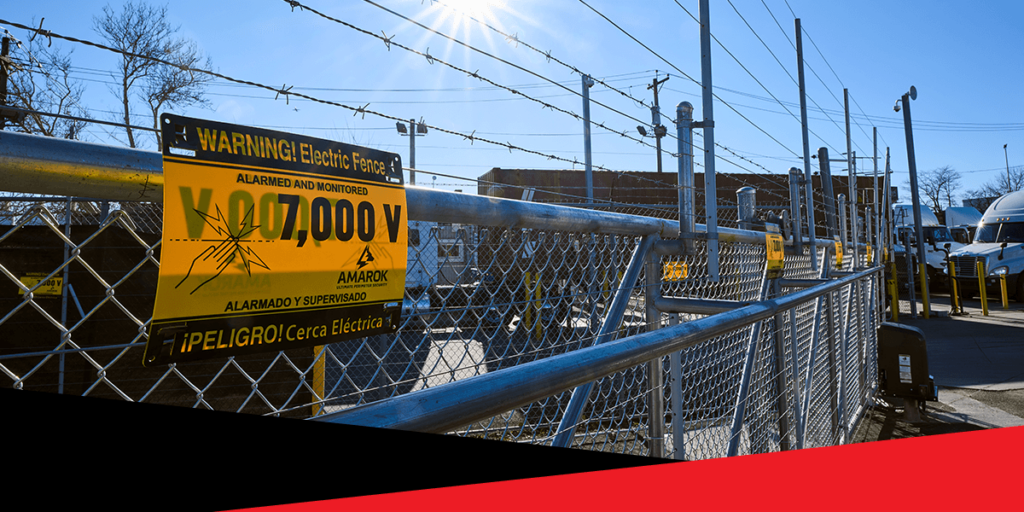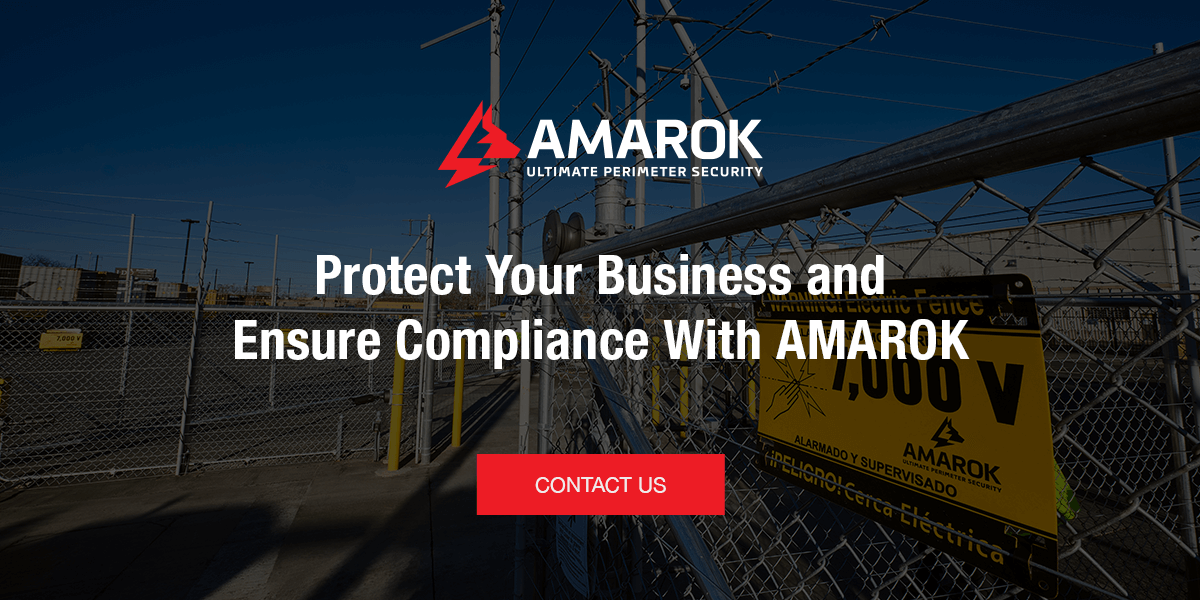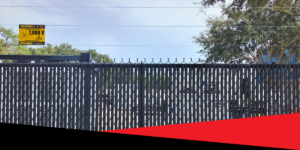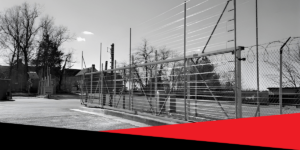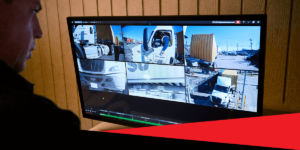You don’t have to be reminded that security compliance is essential for your business. Whether you’re securing a warehouse, data center, or industrial facility, meeting regulatory standards protects your assets, staff, and operations. Physical security compliance management ensures your perimeter security aligns with federal, state, and industry requirements. It also minimizes liability, supports insurance coverage, and strengthens your risk management posture.
Understanding these requirements is the first step. From fencing specifications to access control protocols, knowing what’s expected and required helps you avoid costly penalties while strengthening your overall approach to perimeter security.
Why Physical Security Matters for Compliance
Neglecting perimeter security exposes your site to external theft, vandalism, and unauthorized access as well as potential non-compliance. These incidents can lead to regulatory fines, legal action, or even shutdowns. A breached perimeter can also compromise sensitive data or critical infrastructure. Non-compliance disrupts operations, increases the cost of insurance, and erodes customer trust. In short, a single lapse in physical security can harm your business in the long term.
Key Physical Security Requirements You Should Follow
Most compliance frameworks require multi-layered physical security involving access control, video surveillance, and visitor management as well as comprehensive documentation protocols. Here are the key regulatory bodies to know and the requirements for each:
- System and Organization Controls Type 2 (SOC 2): SOC 2 focuses on data protection and operational controls for service providers. It requires access control for offices or data centers as well as surveillance systems for sensitive areas. Organizations requiring this compliance level must also implement badge or biometric access control with logging.
- American Society for Testing and Materials (ASTM): ASTM is a set of physical standards for barriers and fencing. It includes ASTM F3296-19 for electric security fences and gate construction, which falls under ASTM F2200.
- Occupational Safety and Health Administration (OSHA): OSHA focuses on worker safety and hazard prevention through controlled site access, clear signage, adequate lighting, and emergency exit access.
- ISO Information Security Management Systems (ISO ISMS): ISO/IEC 27001 focuses on information security, but it includes physical components. These include locks, access logs, and surveillance for sensitive areas, restricted access to server rooms, and regular risk assessments to ensure physical safeguards are in place.
- Federal Risk and Authorization Management Program (FedRAMP): FedRAMP focuses on cloud service security for federal agencies. The security requirements include 24/7 video surveillance, controlled physical access to cloud infrastructure, and multi-factor authentication for on-site personnel.
- NIST SP 800-171: NIST SP 800-171 focuses on the protection of controlled unclassified information (CUI) for federal contractors. Regulations include limiting physical access to systems processing CUI, separating sensitive systems and general work areas, and monitoring physical access events.
- Chemical Facility Anti-Terrorism Standards (CFATS): CFATS focuses on high-risk chemical facilities. It demands secure perimeter fencing, access control systems with real-time monitoring, RBPS12 background checks, and security vulnerability assessments.
- North American Electric Reliability Corporation Critical Infrastructure Protection (NERC CIP): NERC CIP requires physical access controls for critical cyber assets and substations. It also demands 24/7 monitoring and physical access attempt logging as well as a defense-in-depth approach with layers of barriers and detection systems.
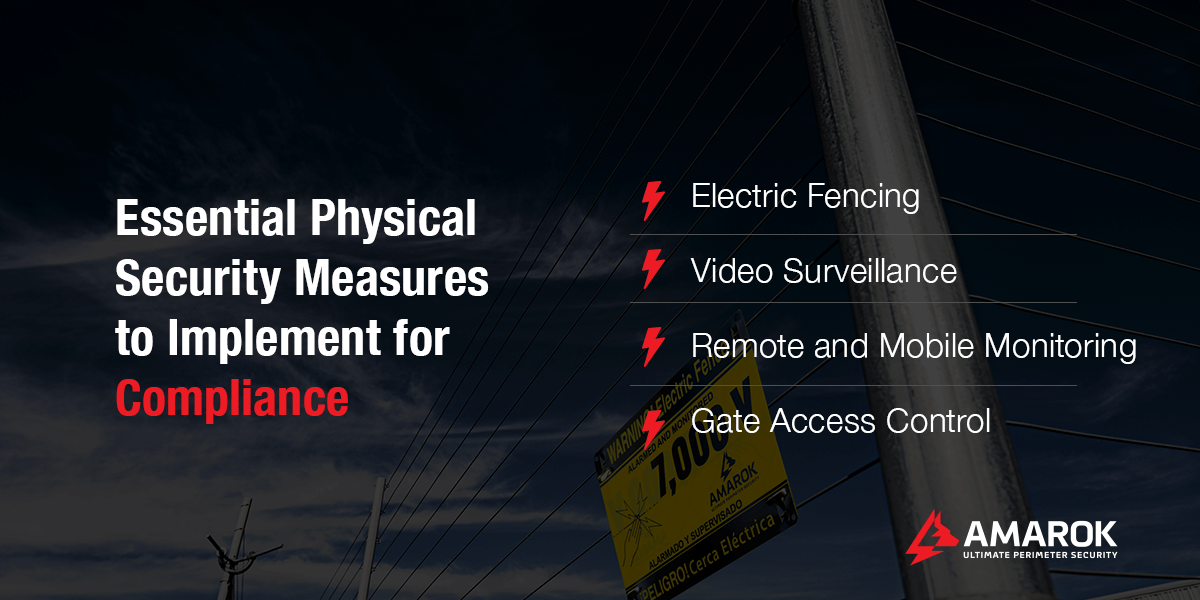
Essential Physical Security Measures to Implement for Compliance
To become and stay compliant with physical security standards, your site needs a multi-layered strategy. Regulators expect security that deters, detects, and documents, securing your operation from real-world threats. Solutions to implement at your business include:
Electric Fencing
Electric fencing is a physical and psychological barrier that deters intruders from attempting to breach your perimeter. The right electric fence supports SOC 2 and FedRAMP, restricting facility access to approved personnel. It also aligns with CFATS with deterrence and delay mechanisms, and NIST SP 800-171 for controlled physical access to sensitive areas.
The Electric Guard Dog™ Fence stops theft before it happens. It delivers a safe but memorable 7,000-volt pulsed shock if a would-be intruder attempts to breach the fence. AMAROK’s electric fence is also OSHA, ASTM, and International Electrotechnical Commission (IEC) compliant. The yellow signs that accompany the electric fence have a universally acknowledged symbol indicating electrification, providing a visual deterrent and helping your site meet safety standards.
Video Surveillance
Commercial video surveillance systems are part of an integrated approach to your site’s security. Access to live footage supports SOC 2, FedRAMP, and ISO 27001 requirements for continuous monitoring of access points. Video surveillance also complies with NERC CIP and CFATS requirements for substation surveillance and real-time monitoring of high-risk facilities.
Remote and Mobile Monitoring
With remote security monitoring, a security monitoring partner keeps an eye on your site 24/7, verifying security threats and responding to them in real time. You will be notified if there is an intrusion attempt or irregular activity, and with mobile access, you can review footage instantly from any connected device.
Gate Access Control
Gate Access Control secures entry and exit points. This security measure integrates with your electric fence and securely monitors site accessibility around the clock. Use credential readers, video or audio intercoms, license plate recognition, and AI cameras, along with other customization options.
Adding Gate Access Control to your perimeter security supports compliance with security regulations according to NIST SP 800-171 and FedRAMP. It also logs and limits access to authorized personnel only in accordance with ISO 27001 and SOC 2 security compliance. If your facility is federally funded, access control also supports CFATS adherence by controlling and recording access to operational or storage areas.
How to Follow Best Practices for Physical Security Compliance Management
Managing physical security requires the right strategy and the right partners. Here are best practices to follow when implementing your compliance management approach:
- Conduct a risk assessment: Start by partnering with security experts who can identify vulnerabilities and recommend a strategic approach to safeguarding your assets and aligning with applicable regulations.
- Implement multi-layered security: Use a combination of the five D’s of security — deter, detect, deny, delay, and defend — for maximum protection and audit readiness.
- Maintain access logs: Track who enters and exits secure areas on your property. Include visitors, employees, and contractors to support compliance audits and potential investigations.
- Document everything: In addition to access logs, keep detailed records of your security controls, maintenance schedules, incident reports, and policy updates. This documentation is essential for compliance reporting.
- Train your staff: Ensure your staff understands the role they play in physical security compliance management. Review access protocols, visitor policies, and emergency procedures on a regular basis.
Protect Your Business and Ensure Compliance With AMAROK
Physical security compliance is a critical component of risk management, regulatory adherence, and operational resilience. By partnering with an industry-leading perimeter security provider like AMAROK, you can achieve and maintain compliance, reduce liability, and strengthen your overall security posture.
AMAROK is an award-winning perimeter security solutions provider securing more than 8,000 companies nationwide. Our experts will work with you to design a multi-layered approach to physical security that protects your assets, data, and reputation. In addition, our government relations and compliance team handles all permitting for your site.
Talk to our experts today and become part of the 99% of AMAROK customers who experience zero external theft after installation.
